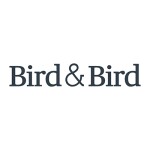A European patent may be challenged on the basis that it does not sufficiently disclose the invention. This concept is fundamental and longstanding: recent UK Supreme Court case law has referred to sufficiency of disclosure as part of the ‘patent bargain’ that justifies the patent system, citing 18th century case law.
A sizable proportion of decisions concerning sufficiency of disclosure have been concerned with the life sciences in recent years. In part this has been driven by a rapid increase in litigation over biotechnologies that are complex, fast-moving, valuable and, compared to many other complex technologies, still at an earlier stage of development and understanding.
In short, patents in that area risk insufficiency because the ‘first to file’ system encourages a race to file ahead of competitors but the complex technology involved would benefit from more time both for its maturation and for its exposition. These decisions have recognised several ‘flavours’ of insufficiency and given guidance on how to evaluate them.
‘Flavours’ include excessive claim breadth, implausible claims and uncertain claim scope. To a degree this increasing sophistication in the analysis of insufficiency has marched alongside other legal development like the recognition that a claim may lack inventive step if its supposed effect is implausible. Again, a large part these developments has been driven by hard cases in the life sciences but the principles from them are generally applicable.
A high-profile current issue in patent law is the treatment of AI-related inventions. Many commentators focus on the permissibility or otherwise of AI entities as inventors. Another area of discussion relates to the patentability of AI-generated inventions or inventions implementing AI-based solutions. Questions have been raised over the applicable standards for inventive step and sufficiency of disclosure.
In respect of sufficiency, early signs are that this may be a significant challenge for AI-related inventions.
First, there is the practicability of disclosure: some commentators have advocated a ‘deposit’ requirement of capability for training data for AI-based inventions.
Second, the AI field is comparable with biotechnology in its complexity, speed of development and potential value but it is less mature. This indicates a significant potential for insufficiency arguments to arise as filings are made rapidly.
Third, AI interacts directly with the European policy-driven exclusions from patentability for computer programs, mathematical methods and mental acts. A patent applicant must navigate between these exclusions and defining and explaining the subject matter of the invention sufficiently.
Fourth, AI is in some respects intrinsically unreproducible and unpredictable. This peculiar characteristic of AI is liable to attract insufficiency challenges, perhaps in conjunction with challenges to inventive step or ‘squeezes’ over infringement. For example, an alleged infringer might challenge whether it can be shown that their product makes use of a particular claimed AI technique in combination with an allegation of insufficiency of the uncertain or excessive claim scope flavours. In time the challenges of dealing with AI may drive recognition of new ‘flavours’ of insufficiency not yet articulated.
Patent law has a long history of evolving basic principles to meet new situations. Sufficiency, a fundamental dimension of the ‘patent bargain’, is by no means new but provides a contemporary illustration of the need for this evolution.
Chris de Mauny
Partner, Bird & Bird
E: christopher.demauny@twobirds.com












